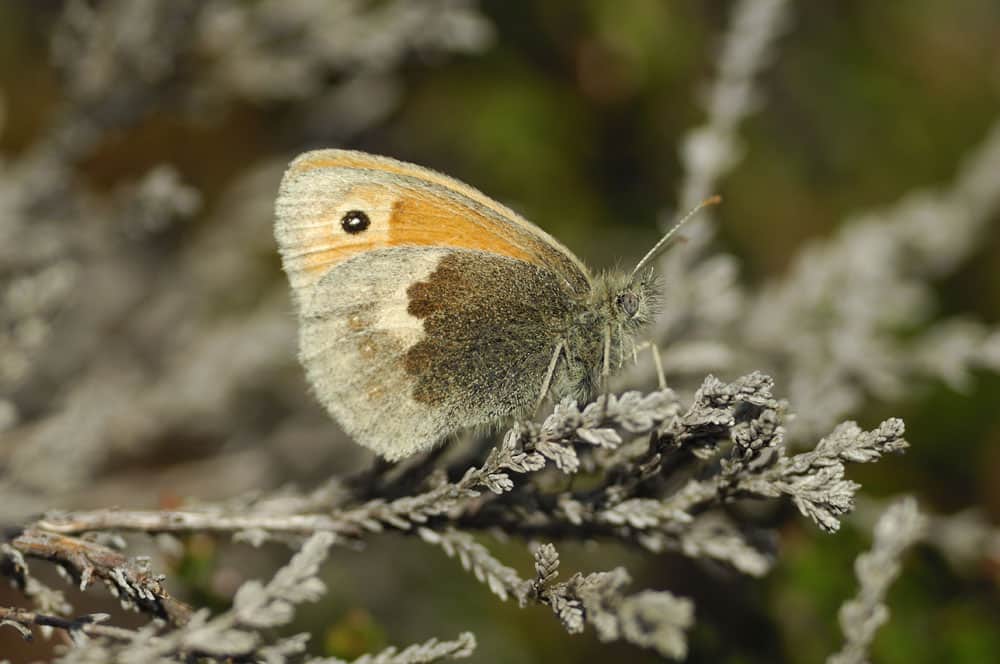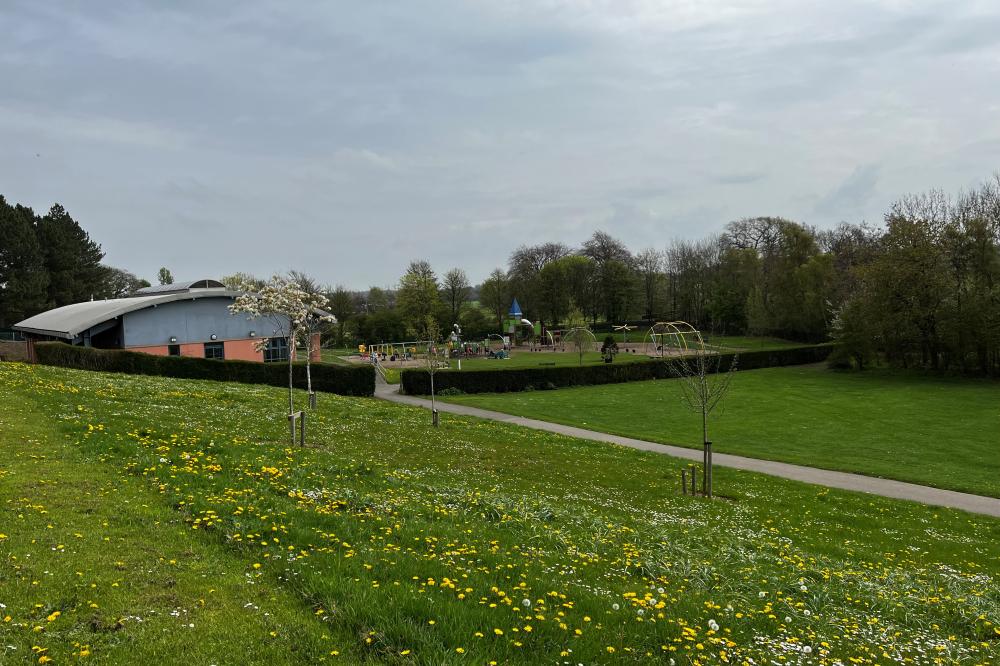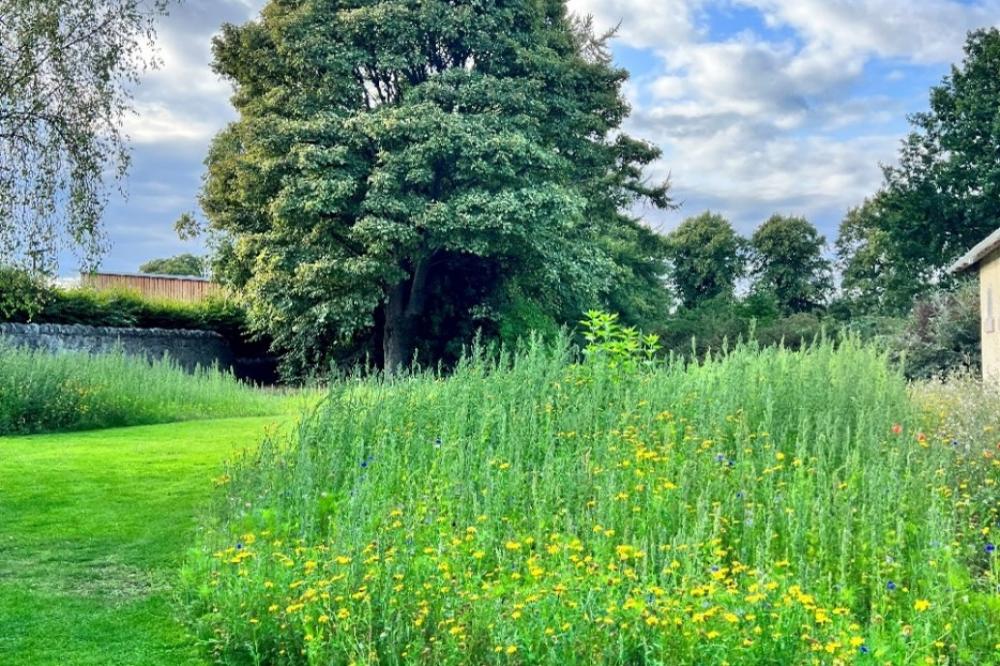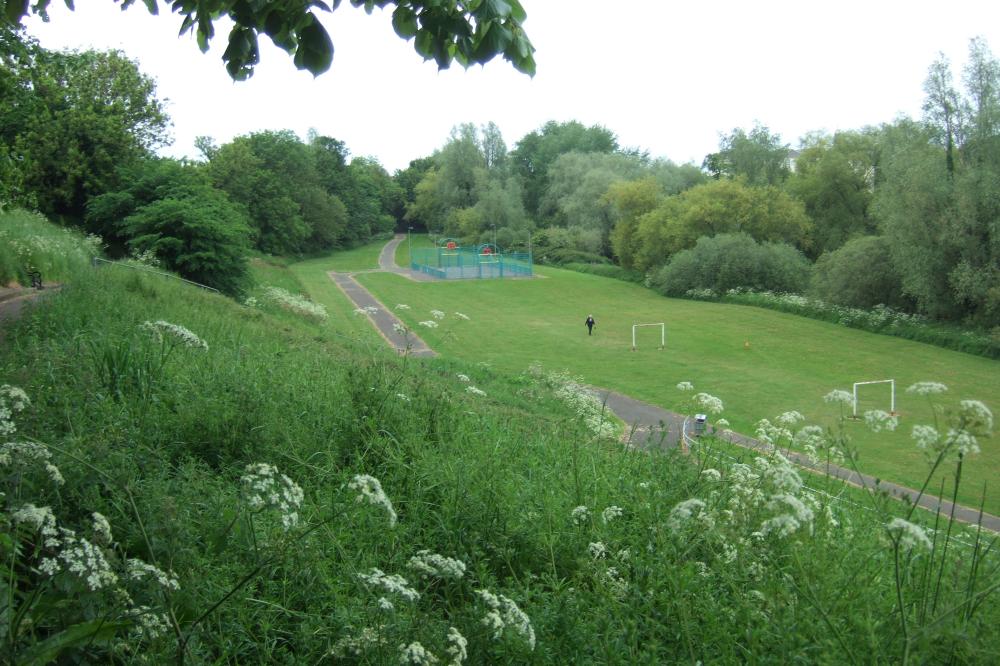Delivery Partners
Timescale
Funding and costs
Funded by the Scottish allocation of the Levelling Up Parks Fund provided to the Scottish Government by the UK Government and managed on behalf of the Scottish Government by Greenspace Scotland.
Cost of this project was £23,500.
Project summary
‘Nature Networks East Lothian’ is a project developed by East Lothian Council to identify, explore, provide advice on and deliver nature network opportunities supported by our communities, in suitable areas of Council owned and managed parks and greenspaces across East Lothian’s towns and villages.
The objective of the project was to identify areas which have the potential for development of enhanced and connected nature networks and biodiversity enhancements with community support and produce an Action Plan which the Council will aim to deliver over the coming years, bringing a wide range of benefits to nature and people.
How was the project delivered in line with the Nature Network Framework principles?
Participation, engagement, and communication
Simple and unifying messaging on Nature Networks across partners with a focus on building people’s connection with nature and fostering stewardship. Engagement with partnerships and communities will be inclusive, empowering and facilitate bottom-up activity.
We produced a distinctive ‘Nature Networks East Lothian’ brand for the project to help build awareness and a recognisable identity. This was used in communication materials such as a dedicated Nature Networks page on East Lothian Council’s website as a central hub of information about the project, as well as news releases across the Council’s news page and social media.
Involving the local community in this project was crucial in the action planning process. By gathering the views of local people we ensured that the nature network actions proposed were supported by local people. We undertook a public consultation which aimed to help the Council to identify opportunities where nature and biodiversity can be enhanced, and which nature networks could be expanded across East Lothian’s parks and greenspaces in our towns and villages.
The types of nature enhancements and natural habitats people supported and commented that they would like to see enhanced in their local areas came from the following suggested options:
- Hedgerows, shrubs and bushes
- Tree planting
- Street trees
- Woodland habitat
- Meadows
- Naturalised grassland
- ‘Wee forests’ / ‘tiny forests’
- Pollinator friendly planting
- Raingardens
- Bog gardens
- Wetlands
The consultation survey was publicised with a news release and social media promotion. It was shared with relevant internal and external stakeholders, community members, organisations and groups, including local Area Partnerships and Community Councils. The public consultation was open for 4 weeks and gained 370 responses.
The responses and feedback received enabled the identification of actions for the Council to progress and develop nature networks across East Lothian’s communities.
The actions have been set out in an Action Plan in the project report, and were categorised under the following objectives:
- Create: Creating new areas of habitat in our parks and greenspaces.
- Enhance: Improving the quality of current networks through better/alternative habitat management in our parks and greenspaces.
- Connect: Connecting habitats to ensure continuous networks of vital habitats and connecting people with nature. Enhancing connections between sites through physical corridors, or through ‘stepping stones’, as well as working in partnership with private landowners, local community groups, organisations or community members to extend nature networks to other greenspace opportunities.
- Restore: Repairing or renewing areas of habitat that may have been subjected to land changes that could be restored to their past condition.
Other achievements of this project were the production of signage to be located on-site to inform the public about nature network enhancements underway in their parks and greenspaces. For ‘quick wins’ we purchased native wildflowers seed mixes and native trees to plant in areas in accordance with the findings of the survey, which were supported by local people.
Knowledge and skills
Nature Networks will be developed using and sharing local knowledge, experience and best-practice, and will support the growth of green skills and jobs.
We identified suitable locations for potential nature network development and enhancement with the knowledge and expertise of our amenity operations team, as well as understand what past works have been achieved.
A total of 27 parks and greenspaces across East Lothian were identified for potential nature network development and biodiversity enhancement.
A working action plan document was created for Amenity Operatives, to assist them to allocate groundcare projects to align with overarching targets set out within the Nature Networks action plan. Operational Guidance Notes have also been produced for Amenity Operatives, setting out the practical details of how to deliver the specific habitats/nature network actions on the ground.
There is also continuous engagement with operational staff to help support them in delivery of nature networks and biodiversity enhancement projects with aims to deliver toolbox talk sessions and future training.
Data, mapping and monitoring
We will be adaptive in our approach to delivering Nature Networks and use the opportunity to improve our understanding of developing effective ecological connectivity. Monitoring approaches for Nature Networks will be developed with, and for, stakeholders to inform management and action that maximises effectiveness of the network.
We collected data as part of this project, through our consultation survey, particularly in relation to public views of nature enhancements they would support in their local parks and greenspaces.
An Action Plan was produced as a key outcome of this project, and ongoing monitoring and reporting will be a key aspect of delivering the actions in the Action Plan going forward.
Further actions planned will include mapping of biodiversity and nature networks areas; and to identify ‘stepping stones’ for nature and locations where further nature enhancements are needed to create a connected nature network.
As a key outcome of the project is improved biodiversity / species diversity / natural habitat in our parks and greenspaces, this will be monitored and evaluated by recording increases in natural habitat developed and species planted / grown. Further ahead and if future funding permits, there may be opportunities for detailed biological recording of species present.
Finance and resourcing
We are very grateful for the external funding for this project, which enabled the project to take place. Capital funding enabled the purchase of the wildflower seeds and trees for planting; however the provision of revenue funding was key to delivering this project in enabling us to employ a staff member to undertake this project.
Policy and mainstreaming
Mainstreaming Nature Networks, and wider biodiversity targets, at all levels of government and across the whole of society to encourage shared responsibility, efficient use of resources, and delivery of multiple benefits (additionality)
This project has been key in commencing the mainstreaming of Nature Networks in East Lothian and raising awareness among our communities, colleagues and other key stakeholders, and it links to wider policy context in tackling the climate and nature emergencies in East Lothian, including the Council’s Climate Change Strategy, Open Space Strategy, Green Networks Strategy and development of our next Local Development Plan.
Key benefits and improvements
- Identified opportunities where biodiversity enhancements could be developed and included these in an action plan which we will aim to deliver over the coming years.
- Identified momentum from respondents to the survey for more biodiversity enhancements and nature networks across East Lothian’s parks and greenspaces.
- Identified opportunities where biodiversity enhancements could be developed.
- Created ‘shovel ready’ projects in line with the action plan for when funding streams come available.
- Opened dialogue with local communities on how they can get involved and help shape what nature networks could look like in their area.
- Opened dialogue with our amenity operational team on what they can do for biodiversity within their management and how they can create nature networks.
- Quick win actions with purchased native trees and wildflower seed mixes, which will be delivered in appropriate areas identified through the consultation.
Challenges and barriers overcome
- There was a short time frame for delivery which created a short time for consultation. We communicated our projects across our news outlets, social media, community councils, libraries and other contacts within the local community to advertise the consultation as much as possible.
- The findings of the consultation included concerns such as the potential for increased dog fouling, ticks, appearance and littering of some nature networks opportunities such as naturalised grassland. We created an FAQ with information on how East Lothian Council will manage these concerns, as well as continual, ongoing engagement with local communities of what they would like to see delivered within their parks and greenspaces.
- This project would not have been achievable without revenue funding to employ a member of staff to undertake these first steps of action planning and consultation. Therefore, this was a critical aspect of the project funding.
Find out more
Help us build a useful toolbox
Share your feedback on existing guidance and resources, as well as links to others you think would be useful. We’d also love to hear about any great Nature Network projects that we should showcase.
.



